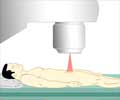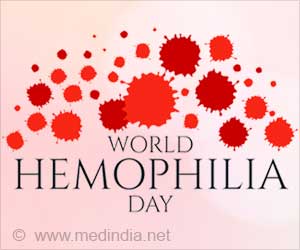Findings of a large study published in the BJU International indicated that circumcision can have a protective effect of up to 60 percent against the development of prostate cancer especially in those men who are circumcised after the age of 35 years.
The lead researcher of the study Dr. Andrea Spence and her colleagues at the University of Quebec, Canada, however, point out that the circumcision was found to be protective only among black men, a group that has the highest rate of the disease. Circumcision could protect other study groups too but not significantly except in men circumcised at age 36 years and older. They did not know the reason why.Circumcision Procedure
The surgical removal of the foreskin, the fold of skin that covers the head of the penis, is called circumcision. Circumcision is widely practiced for religious or traditional reasons or to treat problems of foreskin.
It is generally done in infants one to two weeks after birth or before the boy reaches the adolescent stage. The procedure is performed on adults mainly to treat diseases related to the foreskin.
In infant circumcision, the baby is placed on his back and his arms and legs are strapped so that he cannot move. Local anesthesia is applied on the penis. The foreskin is first separated from the glans (head of the penis) and then the foreskin is removed / cut. Specialized devices such as Gomco clamp, Mogen clamp or Plastibell clamp are used for the procedure.
In adults, the main technique used for circumcision is the Dorsal Slit-Sleeve Technique, though it has successfully been performed in infants as well. The layers of foreskin is first crushed and then the inner and outer layers of the foreskin is slit dorsally till the corona (base of the head of the penis). In the next step the layers are cut off starting with the outer layer.
As with any surgical procedure, circumcision too has its benefits and risks.
• Cleaning the penis is easier.
• Risk for urinary tract infection is reduced in children.
• The possibility of scar tissue formation in the foreskin is reduced. Scar tissue causes inability to retract the foreskin or causes swelling in the retracted foreskin.
• Prevents inflammation of the foreskin and the glans.
• Prevents the risk for HIV.
• Reduces risk of sexually transmitted infection such as syphilis.
• Reduces the risk for penile cancer and prostate cancer in men, and cervix cancer in female partners.
Risks of circumcision:
• Pain and bleeding
• Formation of blood clot under the skin (hematoma)
• Infection at the site of surgery
• Injury to penis
• Adverse reaction to anesthesia
In view of the benefits of the circumcision to reduce risk of diseases, number of researches have been conducted using various parameters. Studies are especially done to find the association between circumcision and prevention of HIV and prostate cancer.
Urologists recommend circumcision at birth to prevent the risk of sexually transmitted infections and penile cancer. A few studies have linked prostate cancer with sexually transmitted infections, though none could prove its cause and effect.
Dr. Matthew Hobbs, Deputy Director of Research at Prostate Cancer UK does not consider the evidence sufficient enough for men to begin consider circumcision to prevent prostate cancer.
‘Although this study appears to show that circumcision after the age of 35 could reduce your risk of prostate cancer, there was no statistically significant association between prostate cancer and circumcision for men circumcised at all other ages. No reason was collected for circumcision, so we can’t say if the association is with circumcision later in life or with whatever causes men to have circumcisions after that age. It is also highly likely that diet, lifestyle, socioeconomic status and healthcare behaviors may have played a role in skewing these results,’ says Dr. Matthew Hobbs.
‘The most important thing is that all men are aware of their risk of prostate cancer and talk to their GP about it, particularly men who are over the age of 50, of African or African Caribbean ethnic origin, or those that have a family history of the disease,’ he continued.
Symptoms of Prostate Cancer
Prostate cancer in its early stages usually does not cause any symptoms. As the disease progresses, you may get symptoms such as:
• Problems passing urine; slow or weak urinary stream
• Frequent urination especially at night
• Blood in urine
• Problems with erection
• Loss of bowel or bladder control
• Weakness or numbness in the legs
• Back pain, chest pain, or pain in the hips
Circumcision or no circumcision, as Dr. Matthew Hobbs pointed out, it is important that all men are aware of the prostate cancer risk and take necessary steps to deal with it.
References:
1. http://www.ncbi.nlm.nih.gov/pubmed/24655933
2. http://www.malecircumcision.org/programs/documents/WHO_MC_Manual_Local_Anaesthesia_v2-5C_Jan08.pdf
3. http://prostatecanceruk.org/news/2014/4/not-enough-evidence-to-suggest-that-circumcision-could-reduce-risk-of-prostate-cancer
Source-Medindia














